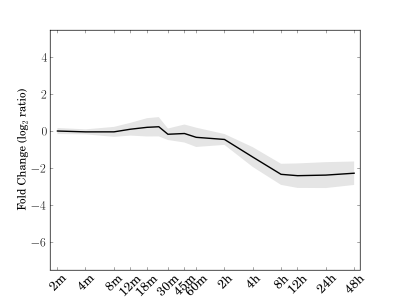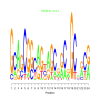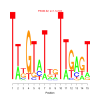Module 53 Residual: 0.13
| Title | Model version | Residual | Score |
|---|---|---|---|
| bicluster_0053 | v02 | 0.13 | -15.05 |
Displaying 1 - 19 of 19
| Cre03.g185550.t1.2 sedoheptulose-bisphosphatase | Cre03.g189800.t1.2 cyclophilin 38 |
| Cre04.g215050.t1.2 beta-hydroxylase 1 | Cre05.g233900.t1.2 ascorbate peroxidase 4 |
| Cre05.g234550.t2.1 fructose-bisphosphate aldolase 2 | Cre05.g238343.t1.1 |
| Cre06.g293700.t1.2 Ribosomal protein L12 family protein | Cre07.g325500.t1.1 magnesium-chelatase subunit chlH, chloroplast, putative / Mg-protoporphyrin IX chelatase, putative (CHLH) |
| Cre09.g389689.t1.1 semialdehyde dehydrogenase family protein | Cre10.g436050.t1.2 Fe superoxide dismutase 1 |
| Cre10.g436550.t1.2 Low-CO2-inducible protein | Cre11.g468750.t1.2 Predicted protein |
| Cre11.g476750.t1.2 root FNR 1 | Cre12.g506550.t1.1 |
| Cre12.g546150.t1.2 Cytochrome b6f complex PetM subunit | Cre14.g623000.t1.1 Haloacid dehalogenase-like hydrolase (HAD) superfamily protein |
| Cre14.g626700.t1.2 2Fe-2S ferredoxin-like superfamily protein | Cre17.g700425.t1.2 |
| Cre17.g715500.t1.2 Thioredoxin superfamily protein |
|
e.value: 6.9 Motif Bicluster: Width: 24 Number of Sites: 1 Consensus: GcAgCGGcaGtaGCggCgGCngcg |
motif_0053_2Submitted by Anonymous (not verified) on Wed, 05/20/2015 - 14:16e.value: 1100 Motif Bicluster: Width: 15 Number of Sites: 1 Consensus: TttGTaTtgTTgagT |
Displaying 1 - 3 of 3
| Interaction | Weight | |
|---|---|---|
| down-regulates |
Cre03.g149350.t1.1Submitted by admin on Tue, 05/19/2015 - 15:51RWP-RK domain-containing protein |
0.061885 |
| down-regulates |
Cre12.g523000.t1.1Submitted by admin on Tue, 05/19/2015 - 15:51zinc finger protein 1 |
0.046346 |
| down-regulates |
Cre08.g375400.t1.1Submitted by admin on Tue, 05/19/2015 - 15:51KNOTTED-like homeobox of Arabidopsis thaliana 7 |
0.042541 |
Displaying 1 - 1 of 1
| GO Terms | Descriptions |
|---|---|
| GO:0016491 | oxidoreductase activity |




Comments